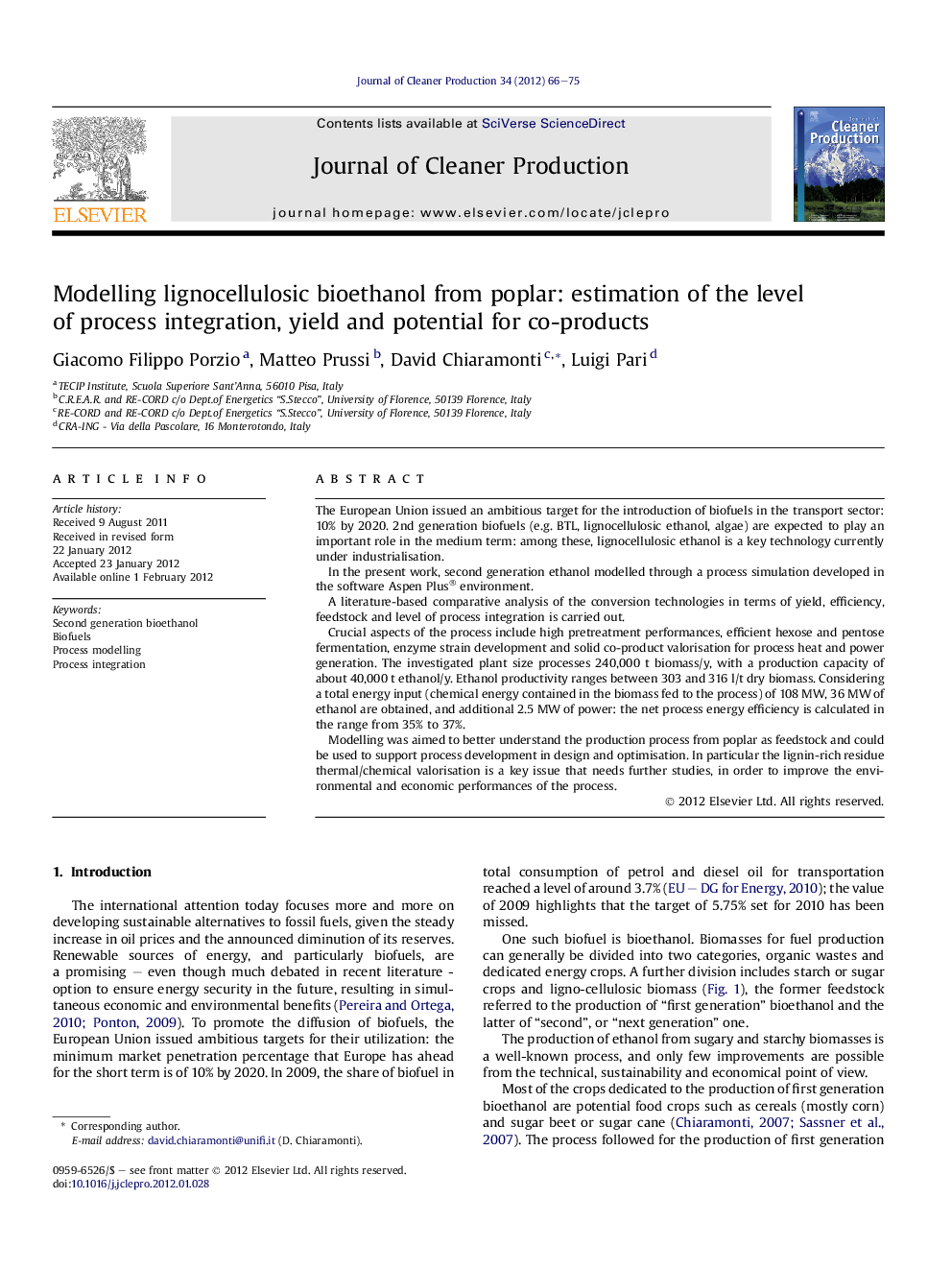| Article ID | Journal | Published Year | Pages | File Type |
|---|---|---|---|---|
| 1745613 | Journal of Cleaner Production | 2012 | 10 Pages |
The European Union issued an ambitious target for the introduction of biofuels in the transport sector: 10% by 2020. 2nd generation biofuels (e.g. BTL, lignocellulosic ethanol, algae) are expected to play an important role in the medium term: among these, lignocellulosic ethanol is a key technology currently under industrialisation.In the present work, second generation ethanol modelled through a process simulation developed in the software Aspen Plus® environment.A literature-based comparative analysis of the conversion technologies in terms of yield, efficiency, feedstock and level of process integration is carried out.Crucial aspects of the process include high pretreatment performances, efficient hexose and pentose fermentation, enzyme strain development and solid co-product valorisation for process heat and power generation. The investigated plant size processes 240,000 t biomass/y, with a production capacity of about 40,000 t ethanol/y. Ethanol productivity ranges between 303 and 316 l/t dry biomass. Considering a total energy input (chemical energy contained in the biomass fed to the process) of 108 MW, 36 MW of ethanol are obtained, and additional 2.5 MW of power: the net process energy efficiency is calculated in the range from 35% to 37%.Modelling was aimed to better understand the production process from poplar as feedstock and could be used to support process development in design and optimisation. In particular the lignin-rich residue thermal/chemical valorisation is a key issue that needs further studies, in order to improve the environmental and economic performances of the process.
